KCOM’s Broadband ISP Engineers Get First Electric Vehicles
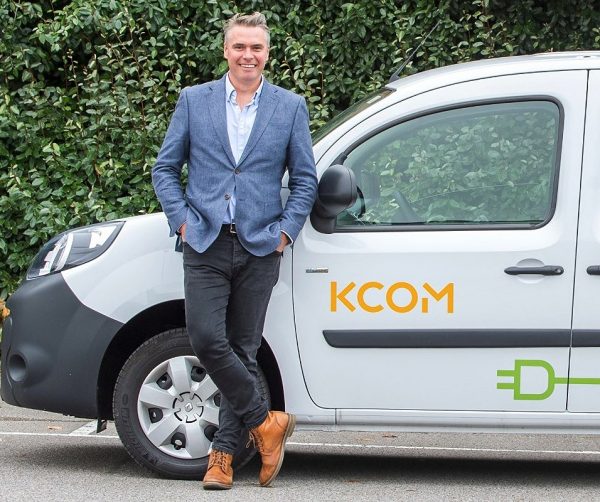
Broadband ISP KCOM, which is currently extending the availability of their 1Gbps Fibre-to-the-Premises (FTTP) network across more of East Yorkshire and North Lincolnshire in England, has followed Openreach (BT) by deploying their first Electric Vehicles (EV) for engineers and other staff to trial.
The operator currently aspires to become a zero-carbon company and part of that will involve the gradual conversion to a new “eco-friendly fleet.” As part of that they’ve just introduced 3 new Nissan Leaf N-Connecta cars (mostly used by staff travelling between offices) and 2 Renault Kangoo vans (mostly used by engineers), which adopt distinctive green and white liveries.
The Nissan Leaf cars can travel a respectable 168 miles on a single charge, while the Renault KANGOO Z.E. 33 claims a WLTP range of 143 miles but promises “real life estimates of 124 miles in summer and 75 miles in winter.” Openreach also deployed a number of the Kangoo cars as part of an initial trial (here), although they’ve more recently opted for Vauxhall’s EVs (here).
Advertisement
As part of this change KCOM has also installed charging points at both of their main Hull offices in Carr Lane and Salvesen Way. The move supports Hull City Council’s aim to be carbon neutral by 2030, as well as the UK Government’s plan to ban the sale of all petrol and diesel cars from 2030.
Tim Shaw, MD of KCOM Wholesale & Networks, said:
“It’s time we all did our bit and stepped up to do whatever we can to help combat the climate emergency the world is facing.
At KCOM we have been looking into the changes we can make – both big and small – that will have a real impact. I’m delighted to announce that this month we are taking our next step towards being a greener business by introducing five electric vehicles for use by employees.”
The performance of the new EVs will now be monitored and used to plan how the company can use more electric vehicles in order to replace its entire fleet in the future. The business is also using energy from 100% renewable sources including solar, wind and Combined Heat and Power (CHP).
Mark is a professional technology writer, IT consultant and computer engineer from Dorset (England), he also founded ISPreview in 1999 and enjoys analysing the latest telecoms and broadband developments. Find me on X (Twitter), Mastodon, Facebook, BlueSky, Threads.net and Linkedin.
« 110+ Businesses in Nottingham UK to Get Gigabit Broadband
Home Working Prompts UK ISP TalkTalk to Rethink Offices »








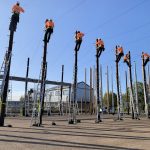

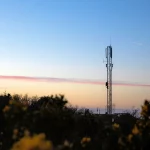

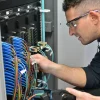
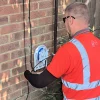

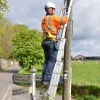







































This is great news – EV fleets for urban and sub-urban uses like this make so much sense.
Shorter distances, and lots of stop/start are ideal for electric cards. Far more efficient, and also quieter with no air pollution for people living in the area.
Hopefully they’ll share performance and reliability experiences with wider industry, with a view of encouraging faster uptake of the net zero approach. We looked at EV vans a few months ago and was incredibly expensive!
I agree.
Unless you are doing a decent number of miles and in the Congestion Charge ULEZ zone…..
We reckon that our EV’s save about £75 a week in fuel and about £60 on Congestion Charge ULEZ.
Assuming you get about 48 weeks of use out of them then you save about £6,500 which equates to £562 per month which is the HP cost of a Tesla3.
That’s interesting info @A_Builder thanks.
How did the insurance and maintenance costs stake up too and what make/models did you use?
I meant stack*…
@Neb
The insurance is more expensive for the Tesla’s due to performance.
We didn’t do it through fleet but on a named driver basis to get the premiums down through Direct Line.
The one that is most awkward to insure is the X as we use it as a loaner, or intend to, for workers who want to use it for family holidays who drive the 3’s. We may replace that function with a Y when it becomes available in the UK.
The Nissan Leaf’s are trivial to insure and those are on the fleet policy.
Generally we are very positive about EV’s – everyone likes them as they are quiet.
We provide free charging at head office – haunt negotiated with our neighbours we have 3 x 22kW feed split if 1 x 22kw 3 phase charger and the two lots of 22kW split over 3 chargers each. Everyone seems to get a full charge by EOD.
I’m about to buy an electric JCB!
By the time you load up the vehicle the range is so low. Also having so many reliability issues with the EVs at the moment too.
I think Hydrogen Fuel cell would be a better advantage. Lighter than battery and means no payload lost
@Chris
I take your point if you team expects you put 1000kg in the back and row 2500kg.
What are you using?
Our EV experience is only Tesla (long rage driving) and Nissan Leaf (short range driving). If you tried to go distances in a Lead you would have a dreadful experience. If you are using the Leaf to go into town and get two people to a meeting, or drop the kids to school 15 miles away it us absolutely perfect.
Horses for courses.
Sadly there is no Teslaised level van out there – yet.
@A_builder Hydrogen looks a better bet for HGVs and other weight moving vehicles assuming the market goes that way with excess wind power used for generation rather than taken off line.
@Joe
The problem is, sorry for saying this with a PhD in Chemistry, that the efficiency of Electric -> Hydrogen -> Motive power is absolutely terrible.
As it stand BEV is better. Now that may well change and I am open minded.
At the present rates of battery progress of 8% per year in 3 years time the present battery weight will have hit the magic 450 miles. From then on the battery weight will probably decrease by 8% per year and at that point the whole thing forms a virtuous circle as the reducing weight means increased range all by itself which will probably translate to even further reduction in weight and a static range.
Of course there will be limiting physics to this.
But BEV tech is in the foothills ATM.
If you could come up with a clean source of hydrogen then game on for sure. Fuel cells work fine. And a lot of good minds will be on this in chemistry labs all over the world.
The only slight point is that fuel cells are constant(ish) output so they need to work with a battery to store the power to provide for acceleration etc. Really the fuel cell is more like a range extender with present tech.
Also, H2 is the worst possible fuel to handle and store: its tiny molecules escape through virtually anything.
If you’ve got H2, you might as well use it to synthesise methanol (from CO2), and then you’re back to a conventional fuel.
As I thought my post made abundantly clear we have already in many cases, and will have vast excesses soon, of wind in the UK (and solar elsewhere) that exceeds grid demand for long periods. Atm we pay them not to produce energy. They are clearly ideal for H production and as that energy is ‘free/wasted otherwise’ the efficiency is not so big an issue.
In terms of batteries progress is all well and good but unless the tech itself changes there is simply not enough quantity of lithium, cobalt, and nickel to supply future demand. So alternatives will be needed.
“ lithium, cobalt, and nickel“
The production levels of lithium and cobalt might be an issue. But there is plenty of it around in the earths crust.
Nickel is used in massive quantities in steel making and cobalt is to a lesser extent.
Issue is how to extract lithium from sea water – natural evaporation in very hot countries In traditional salt lagoons followed by fractional crystallisation……ATM sea salt is extracted this was and the lithium thrown away.
Methanol -> fuel cell might be better than hydrogen as fuel pumping won’t be that different. Established tech too.
If demand doubled (highly likely given battery growth forecasts) we have something like 30 years of C (from known reserves) left.
“ we have something like 30 years of C (from known reserves) left“
By C do you mean Co? Co is the proper (UPAC) shorthand for cobalt C is the shorthand for carbon. I don’t think we will run out of carbon any time soon!
I digress.
Tesla are progressively reducing the cobalt content of their batteries. see Elon’s Battery Day announcement.
There are a range of other battery chemistries out there that don’t involve cobalt at all.
I’d be interested to know which battery pack the new Plaid Model S uses to get 540 miles of range!